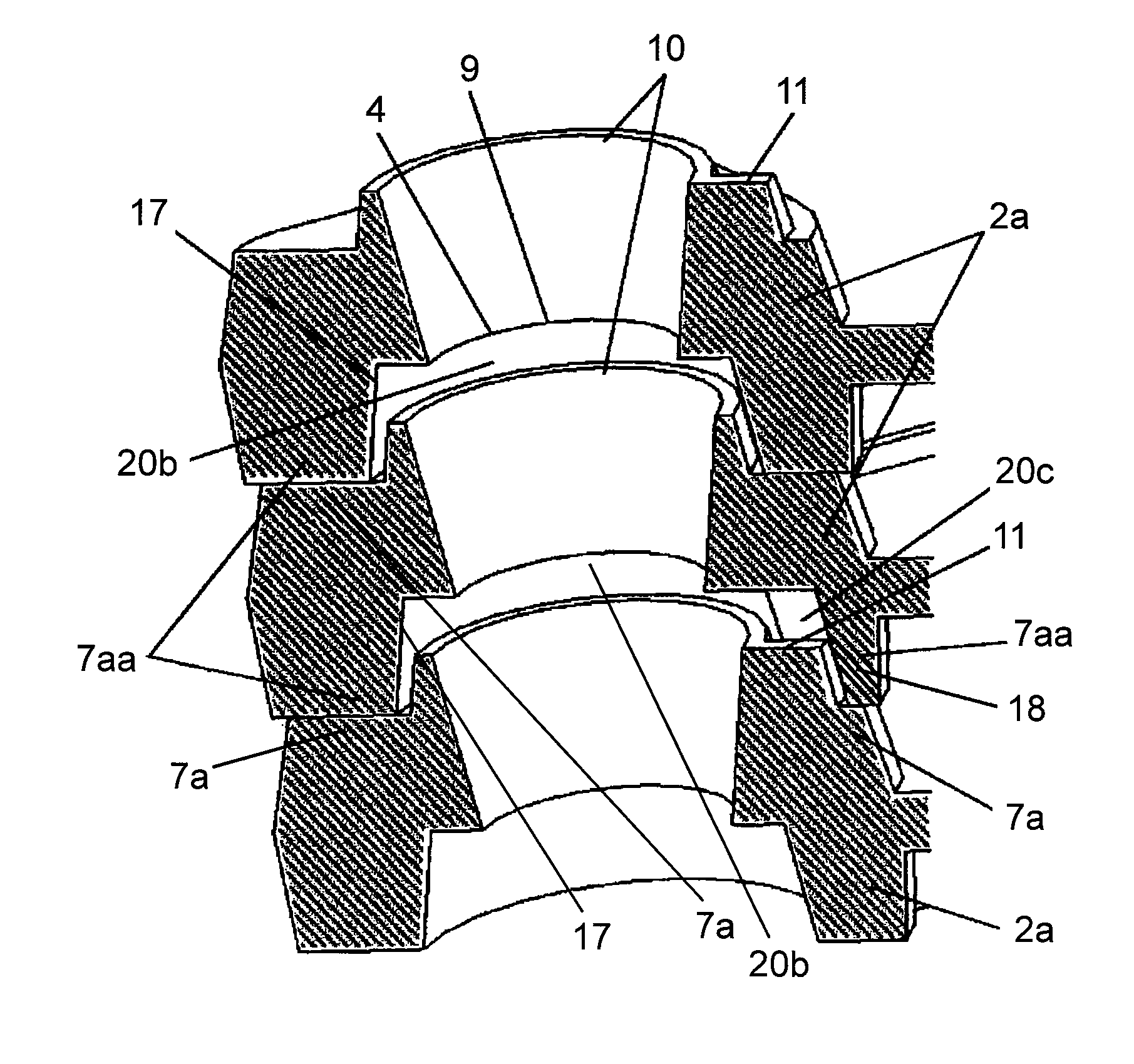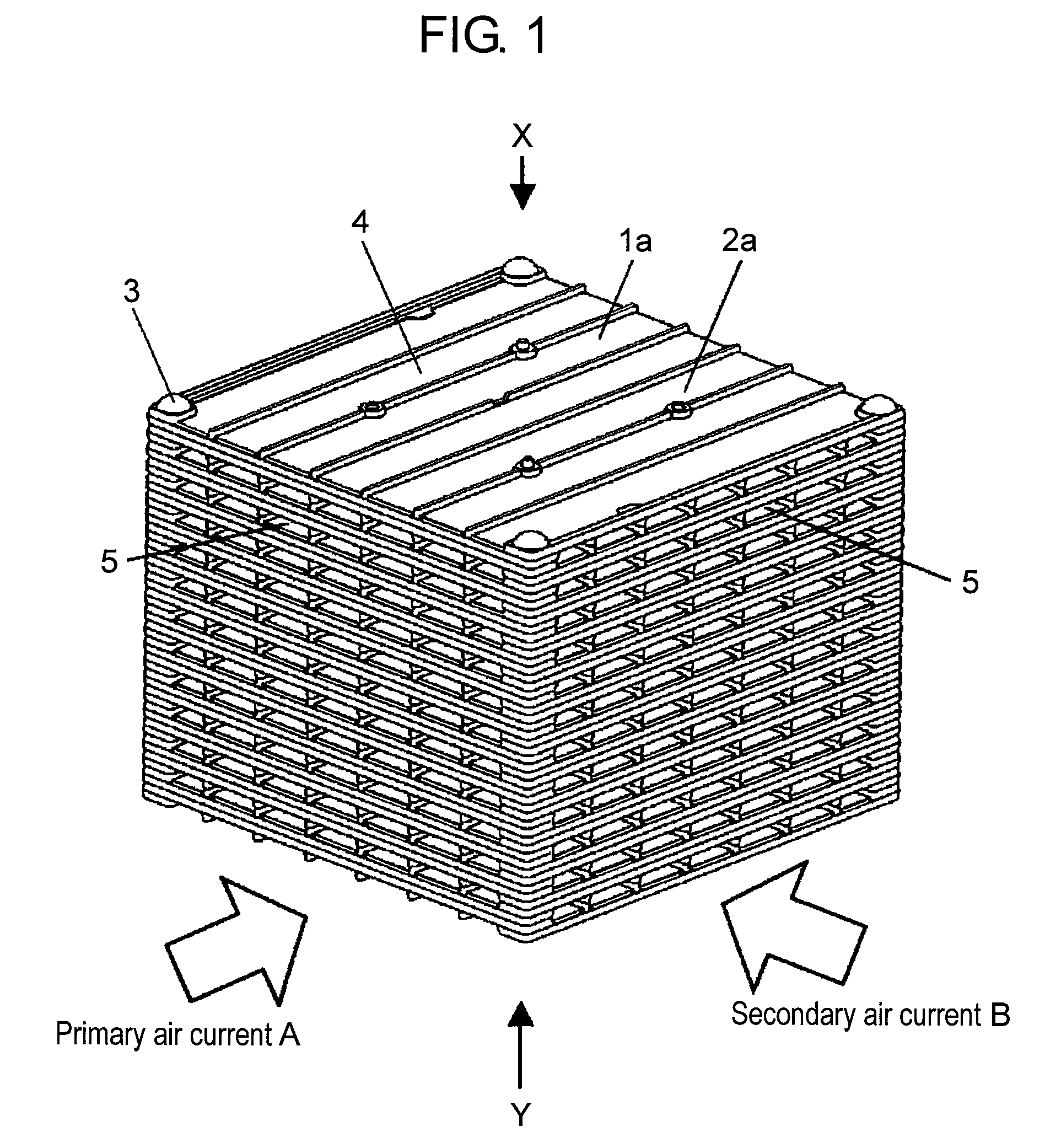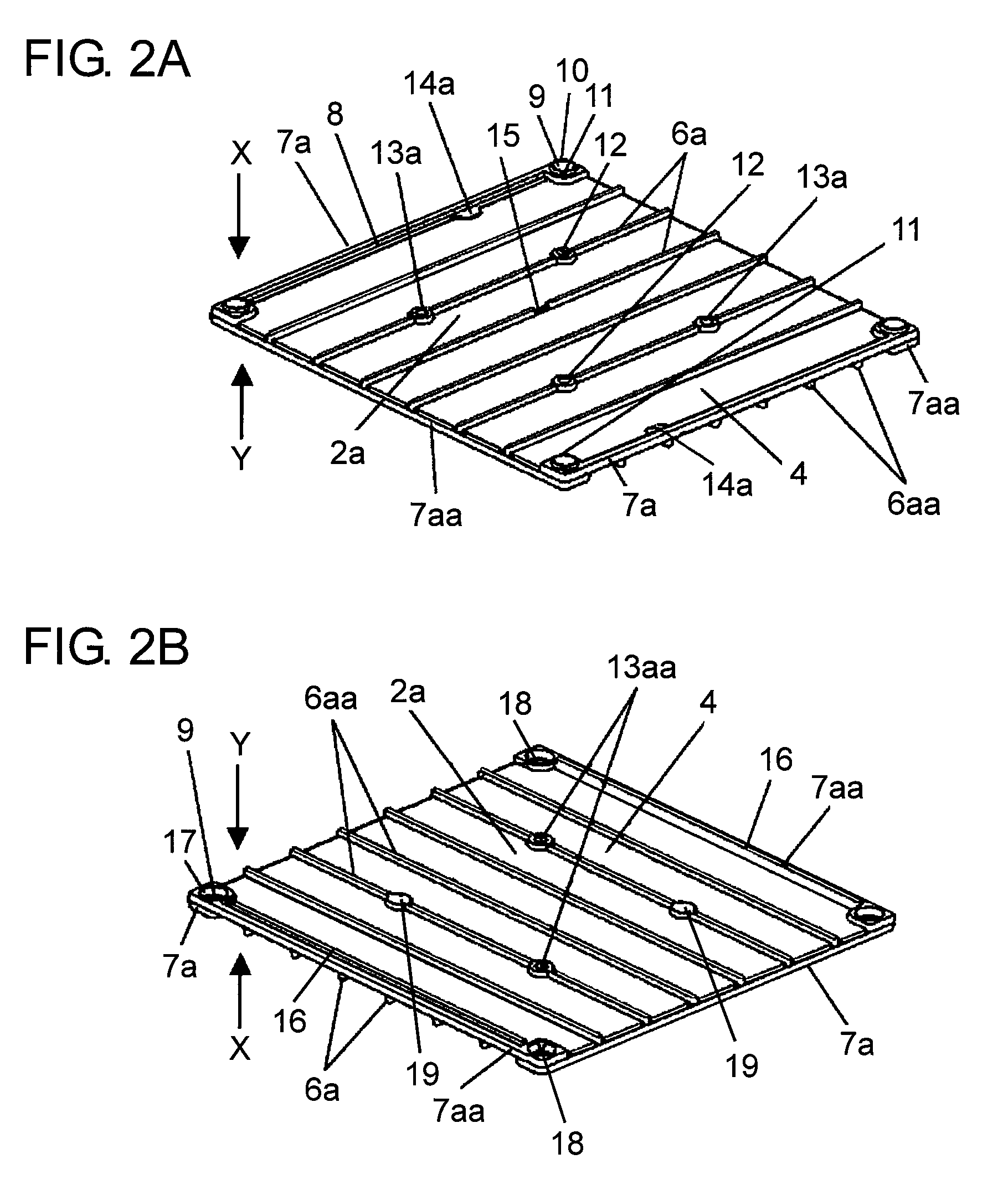Heat exchanger and its manufacturing method
a technology of heat exchanger and manufacturing method, which is applied in the direction of metal-working equipment, lighting and heating equipment, laminated elements, etc., can solve the problems of air current leakage and heat conversion efficiency drop, and achieve the effect of preventing air current leakage, enhancing mass productivity, and eliminating incorrect stacking of unit elements
- Summary
- Abstract
- Description
- Claims
- Application Information
AI Technical Summary
Benefits of technology
Problems solved by technology
Method used
Image
Examples
first embodiment
[0095]FIG. 1 is a schematic perspective view of a heat exchanger according to the first embodiment, FIG. 2A is a schematic perspective view of a unit element seen from an X-direction shown in FIG. 1, and FIG. 2B is a schematic perspective view of the unit element seen from a Y-direction shown in FIG. 1. FIG. 3 is a schematic exploded perspective view of the heat exchanger shown in FIG. 1. FIG. 4A is a schematic perspective view of the heat exchanger in which the unit elements of the heat exchanger shown in FIG. 1 are correctly stacked, FIG. 4B is a schematic perspective view of the heat exchanger taken along line 4B-4B shown in FIG. 4A, and FIG. 4C is a schematic enlarged perspective view of a circled portion in FIG. 4B. FIG. 5A is a schematic perspective view of the heat exchanger in which the unit elements of the heat exchanger shown in FIG. 1 are incorrectly stacked, and FIG. 5B is a schematic enlarged perspective view of a circled portion in FIG. 5A.
[0096]FIG. 6A is a schematic ...
second embodiment
[0164]FIG. 14 is a schematic perspective view of a heat exchanger according to the second embodiment, FIG. 15A is a schematic perspective view of a unit element seen from an X-direction shown in FIG. 14, and FIG. 15B is a schematic perspective view of the unit element seen from a Y-direction shown in FIG. 14. FIG. 16A is a schematic perspective view of the heat exchanger in which the unit elements of the heat exchanger shown in FIG. 14 are correctly stacked, FIG. 16B is a schematic perspective view of the heat exchanger taken along line 16B-16B shown in FIG. 16A, and FIG. 16C is a schematic enlarged perspective view of a circled portion in FIG. 16B.
[0165]FIG. 17A is a schematic perspective view of the heat exchanger in which the unit elements of the heat exchanger shown in FIG. 14 are incorrectly stacked, FIG. 17B is a schematic perspective view of the heat exchanger taken along line 17B-17B shown in FIG. 17A, and FIG. 17C is a schematic enlarged perspective view of a circled portio...
PUM
| Property | Measurement | Unit |
|---|---|---|
| thickness | aaaaa | aaaaa |
| thickness | aaaaa | aaaaa |
| width | aaaaa | aaaaa |
Abstract
Description
Claims
Application Information
 Login to View More
Login to View More - R&D
- Intellectual Property
- Life Sciences
- Materials
- Tech Scout
- Unparalleled Data Quality
- Higher Quality Content
- 60% Fewer Hallucinations
Browse by: Latest US Patents, China's latest patents, Technical Efficacy Thesaurus, Application Domain, Technology Topic, Popular Technical Reports.
© 2025 PatSnap. All rights reserved.Legal|Privacy policy|Modern Slavery Act Transparency Statement|Sitemap|About US| Contact US: help@patsnap.com



